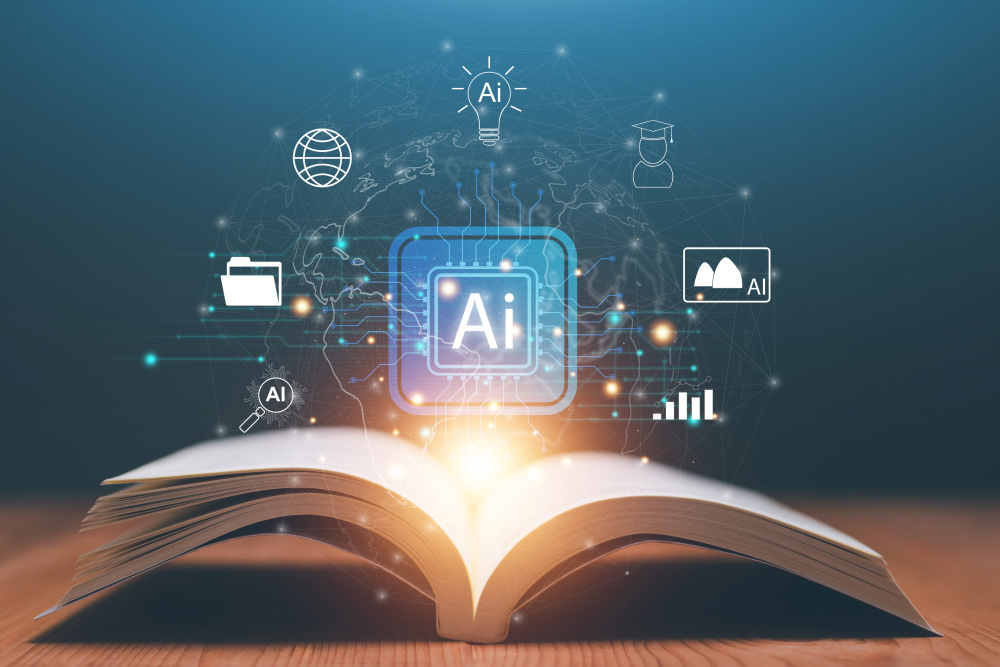Role of AI in the education sector

The Artificial Intelligence (AI) technology has made significant improvements in recent years. It’s now utilized in various fields, including the education sector. Schools, colleges, and universities are incorporating AI and its tools to enhance the learning process, making it more effective and accessible. AI has made everyday learning easier by helping students manage homework and allowing educators to focus on teaching. It has become a valuable tool for teachers and students.
Role of AI in education
AI technology enables computers to think in ways similar to humans. This quality helps individuals solve problems and make decisions. In daily life, this tech is used to perform the simplest functions, such as a streaming app suggesting what show to watch next. Features like text prediction in messaging apps and voice assistants on smartphones are also based on AI.
Similarly, in educational settings, this technology helps streamline many tasks, including creating lessons, grading assignments, and providing feedback. AI-based applications support teachers by making their work more efficient. For example, these are tools that can help keep track of student progress, suggest new activities, or translate text for multilingual classrooms. While teachers focus on encouraging creativity and comprehension in their students, AI assists by saving time and meeting each student’s needs.
How AI helps teachers improve their workload
Teachers and educators have to manage numerous tasks, including creating lesson plans, grading assignments, and providing student support, on a daily basis . In the classroom, AI can serve as a supportive tool that simplifies their tasks. These tools can significantly save the time and energy that teachers typically spend on grading and planning each week.
For instance, AI-powered grading tools can quickly review essays and scan handwritten tests, allowing for a faster grading process while providing quick and unbiased feedback. This not only helps students learn more efficiently but also gives teachers more time to develop effective lessons.
There are also smart lesson assistants that can help modify assignments and recommend activities and reading materials tailored to various lesson plans. These smart tools function like digital co-teachers to enhance learning experiences. This allows teachers to concentrate more on what truly matters, i.e., teaching and building connections with their students.
How AI helps students enhance their learning experience
With the use of AI, learning can become more personalized and engaging for students. This is why many educational institutions are now implementing AI-powered tools that adapt lessons to meet the learning styles of students. For instance, a high school student can use an AI-based application that breaks down an algebra concept in detailed steps, making a difficult topic easier to understand.
Along with these tools, there are AI-based tutors available 24/7. These tutors can assist with assignments and projects and provide extra practice outside of school hours. Acting as virtual helpers, AI-based tutors can simplify complex concepts and answer queries, guiding students through challenging subjects.
In addition, there are accessible AI-powered tools, such as speech-to-text and reading aids, that further facilitate learning. To make subjects more interesting and exciting, AI also presents gamified lessons. These engaging approaches help motivate students and keep them actively involved in subjects like math and science.
Pros and cons of AI in education
Pros
- Teachers can save time and effort by automating administrative tasks.
- Students with different learning styles receive support through customized lessons.
- Education becomes more accessible to everyone, regardless of age.
- Interactive tools and 24/7 support encourage students to be more curious and pursue independent learning.
Cons
- There are privacy and security concerns that must be addressed to protect student information.
- Additional resources are required to train teachers so they can use AI tools effectively and responsibly without increasing their workload.
- There’s a potential risk of students becoming overly reliant on AI if a balance of its usage is not maintained.










